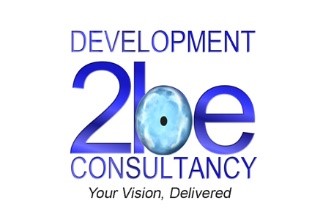‘You’re on mute’ has to be one of the most common phrases we heard last year as we all started working from home. And as we then embraced the technology that allowed us to see our colleagues as well as hear them, the second most common phrase has to be ‘let me share my screen’.
Before the pandemic, producing an information pack for a stakeholder meeting was mainly reserved for the weekly status update or when you needed to discuss different possible solutions to a problem. The format was typically text heavy, issued ahead of the meeting to allow time for the attendees to read it and then it was reviewed (or scrutinised), either sat around a table, or on a teleconference. Without the comfort of being able to pop along to a colleague’s desk to have a quick catch up or a find a free meeting room to discuss an issue that has arisen, the need to share information so that everyone remains informed is constant. PowerPoint has been resurrected and we find ourselves watching slide-after-slide on meeting-after-meeting that, pre-pandemic, would have been considered a ‘death by PowerPoint’ approach. And whilst I’m secretly enjoying being able to revisit some old skills, the desire to create engaging visual presentations has become a full-time job. How do you keep on top of the constant requests for information on the same topic but all with a slightly different requirement? Over the years, I’ve developed an approach that may just help you to put together engaging slide packs time and time again, that can be used with multiple audiences but with minimal rework. Interested? My top tip; always start by creating a master slide pack.
this approach will take you longer initially, but I have found time and time again that it is time well invested that is paid back tenfold during a project or topic’s lifetime
It is true that when asked to create a presentation, the first question should always be ‘who are my audience?’. The audience will determine not only the amount of information you present but how you present that information. I have learned over the years that senior managers typically want a ‘helicopter view’ with the ability to zoom into the detail if they choose. Individuals involved in creating processes crave the detail, whilst those who use the processes only need the part of the detail that is relevant to them but need it explained in an engaging way that helps sell it to them. Therefore, if you aim to start by creating a master pack that contains all the information, not only does it help you sense check what you are pulling together, for any gaps or inconsistency, it also means you can create sub packs for any audience as required.
When creating my master pack, I break it into three chapters:
- A high-level summary limited to no more than three slides. Grids, single colours in multiple tones to distinguish different sections, aligned text and clear icons in complementary colours work best in this section. Your aim should be to give the reader a clear and concise overview or summary of the topic in the minimal amount of time. Look to include the aim or vision, objectives, plans and goals, and an outline of the strategy that sets up the central message of the topic. I find that creating my high-level summary also helps me develop a script of how to introduce the topic to a new audience, as it includes all the items I would put in an opening statement.
- Explanation of the topic – here I aim to tell the story of the topic in no more than seven slides. Process maps, pictures, timelines, picture icons all help to provide a visual overview that the reader can follow. Explanatory text can be added to help to bring a topic to life and provide narrative where necessary.
- Appendix – In my packs, this is normally the more text rich section which may still include visuals and summaries but with an increased amount of text to provide the detail. It may also include screenshots of other relevant information I have gathered; anything that helps to provide the detail. This can have an unlimited number of slides, but I try to confine it to ten.
I admit that this approach will take you longer initially, but I have found time and time again that it is time well invested that is paid back tenfold during a project or topic’s lifetime. When I take this approach when project managing, I find that the format of the summary slides work well when you want to present different options for a decision maybe at a project’s Steering Meeting, the visual topic slides are a great source of information for training designers who tend to be visuals, whilst the information in the appendices is referred and shared time and time again to confirm the project’s scope. When not running a project, I also use this approach to gather information to understand a subject as it means I can build a picture gradually, and then use the slides to replay and check my understanding.
This master presentation quickly becomes the ‘go to’ document and always means that when asked for an explanation or information on your topic, you can say with confidence ‘let me share my screen’ as you know what you share will hit the mark with whoever is watching.
Our sponsors help us bring T-CNews Content to you for free





